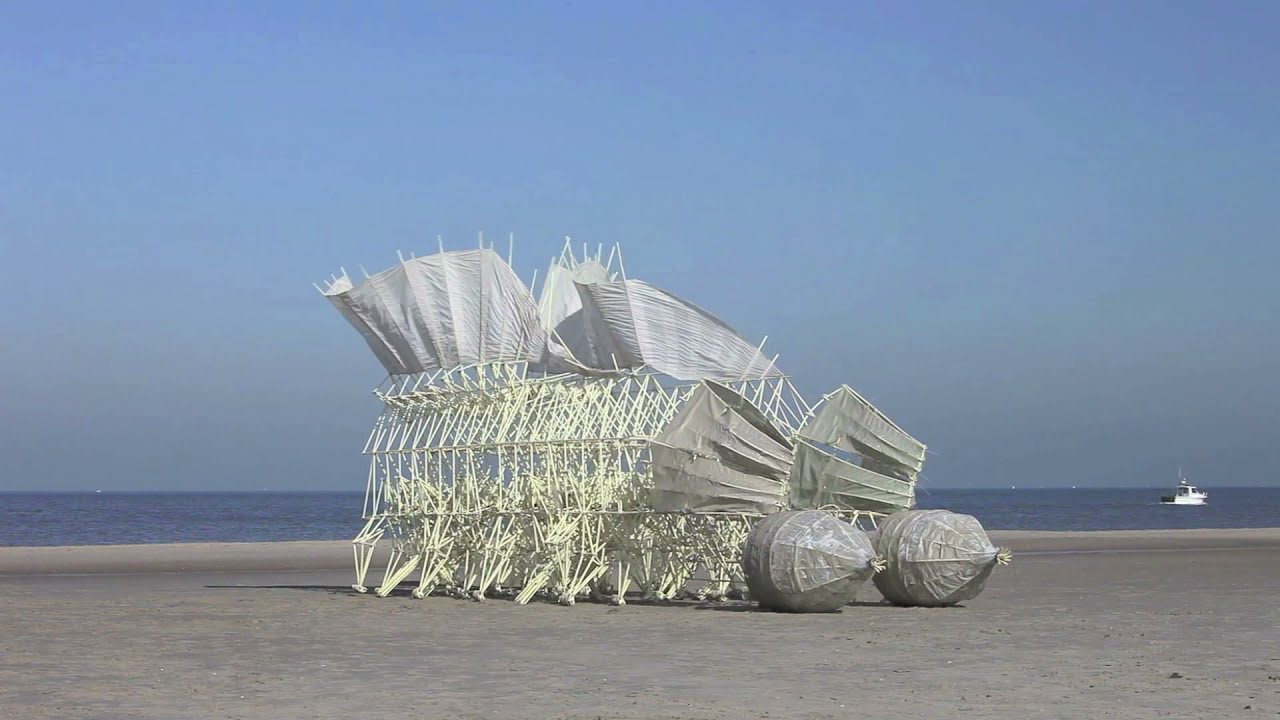
Robert Draws – Strandbeest Mortuary is a unique art installation located in Delft, the Netherlands. The installation features kinetic sculptures called strandbeesten, created by Dutch artist Theo Jansen. These wind-powered creatures are constructed from PVC pipes and wood, designed to move autonomously using the wind. For decades, Jansen has developed and evolved these mechanical beings. Recently, the strandbeesten were moved to a dedicated exhibition space now known as the ‘mortuary.’ This new display allows visitors to observe the evolution of the strandbeesten over many years. Despite their absurd appearance, the installation holds deep philosophical meaning about evolution and death.
Theo Jansen began creating strandbeesten in the late 1990s. The term “strandbeest” means “beach beast” in Dutch. These sculptures are designed to move along the beach, powered only by wind. Jansen combines engineering and art to produce living mechanical creatures. Over time, the designs became more complex and efficient. The strandbeesten evolved with each new iteration. Each model learns from the previous one to better adapt to the environment. This mimics natural evolution, but with plastic and wood as building blocks. The creatures’ movements resemble walking, running, and even balancing acts. Many strandbeesten are large, some reaching several meters in height.
“Read about: Painting with Fire: Exploring the Art of Encaustic Wax”
Recently, the strandbeesten were relocated to a specially designed space in Delft. This space is named the “Strandbeest Mortuary.” The mortuary showcases retired or non-functional creatures. The display looks like a graveyard for these mechanical animals. Visitors see them as if they were lifeless, frozen in time. The installation appears surreal and somewhat absurd. It looks like mechanical beasts trapped forever in a silent room. But beneath this odd appearance lies a profound message. The mortuary symbolizes the inevitable cycle of life and death. Jansen uses this display to reflect on the evolution of his creations. It also invites viewers to think about the natural cycle of life.
Strandbeest Mortuary goes beyond mere mechanical art. It explores themes of evolution, mortality, and artificial life. The creatures are neither fully alive nor completely lifeless. They blur the boundaries between the natural and artificial worlds. Jansen’s work asks important questions about existence and survival. The mortuary shows how technology and biology can intersect. These creatures rely on natural forces like wind to move. Yet they are crafted by human hands from synthetic materials. Their “death” in the mortuary provokes thoughts on obsolescence and renewal. The display encourages viewers to consider how life evolves and fades away. It suggests that even man-made creations have life cycles.
“Read more: Reinforcing Justice: The EU’s New Anti-Trafficking Directive Takes Shape”
The mortuary attracts art lovers, scientists, and curious visitors alike. Many visitors find themselves fascinated by the blend of art, science, and engineering. They observe the creatures’ complex joints and movements up close. Additionally, they trace the historical development of strandbeesten designs throughout the years. Furthermore, the installation encourages reflection on the future of kinetic art. Some people view the strandbeesten as symbols of environmental change. Meanwhile, others appreciate the creativity and inventiveness involved in the work. Despite the eerie setting, the mortuary continues to fascinate many people. Moreover, several international art publications have featured the installation. Overall, it challenges traditional ideas about sculpture and animation.
Strandbeesten use mainly lightweight PVC pipes and wooden joints. These materials provide both flexibility and durability. The creatures move by capturing wind energy through large sails or wings. Then, the complex mechanisms transfer wind power into walking motions. Many parts operate without electronics or motors. In fact, the movements rely fully on mechanical energy, driven solely by nature. Additionally, Jansen continuously experiments with new designs to improve efficiency. The creatures also adapt to various terrains like sand, gravel, or flat surfaces. Over the years, the strandbeesten have become more robust and reliable. Finally, their design process mimics natural selection, favoring successful models.
Theo Jansen has become a prominent figure in kinetic art. His strandbeesten have inspired artists, engineers, and environmentalists worldwide. The mortuary installation is a milestone in showcasing his work’s evolution. It documents decades of experimentation and creative growth. Jansen’s vision combines art with ecological awareness. His creatures remind us of the power of natural forces and human creativity. The strandbeesten project also raises awareness of sustainability and technology. By using simple materials and wind energy, the art promotes green innovation. The mortuary serves as a testament to the enduring impact of his work.
Although many creatures now rest in the mortuary, new strandbeesten are still being created. Theo Jansen continues to refine and expand his collection. He experiments with new designs that react to different environmental factors. The future of strandbeesten may include interactive or digital elements. Some propose integrating sensors or AI to enhance movement. The mortuary may evolve into a living museum with occasional reactivations. It could become a site for education about biomechanics and renewable energy. Strandbeesten remain a unique blend of art, science, and nature. Their story continues to inspire people around the world.